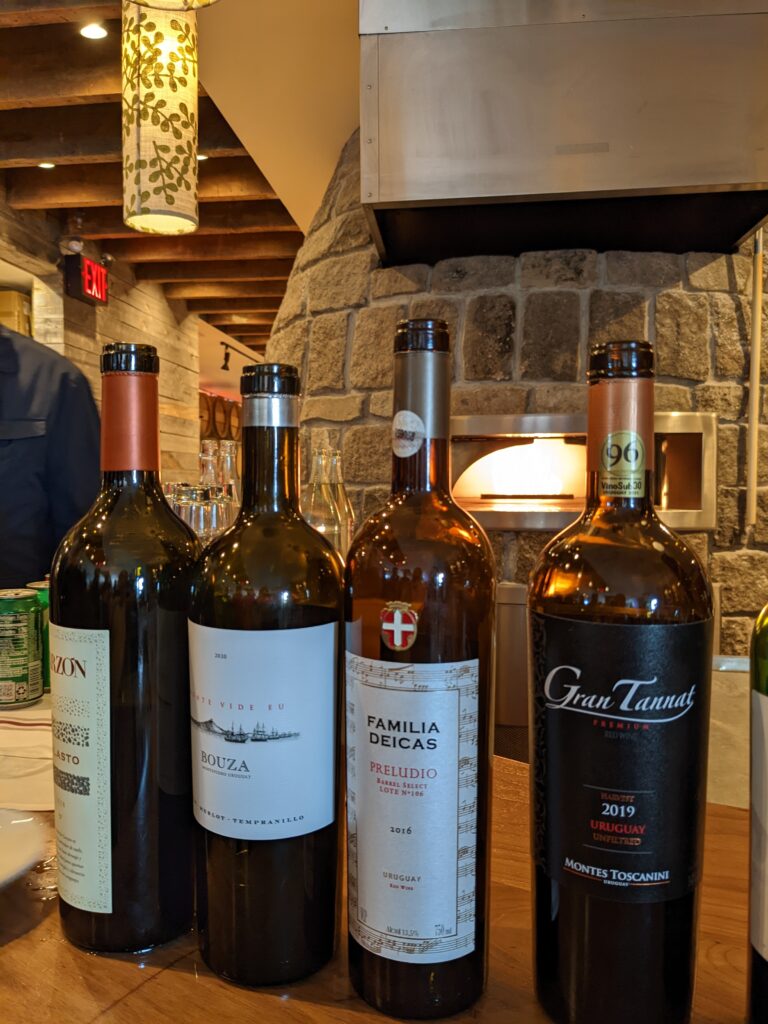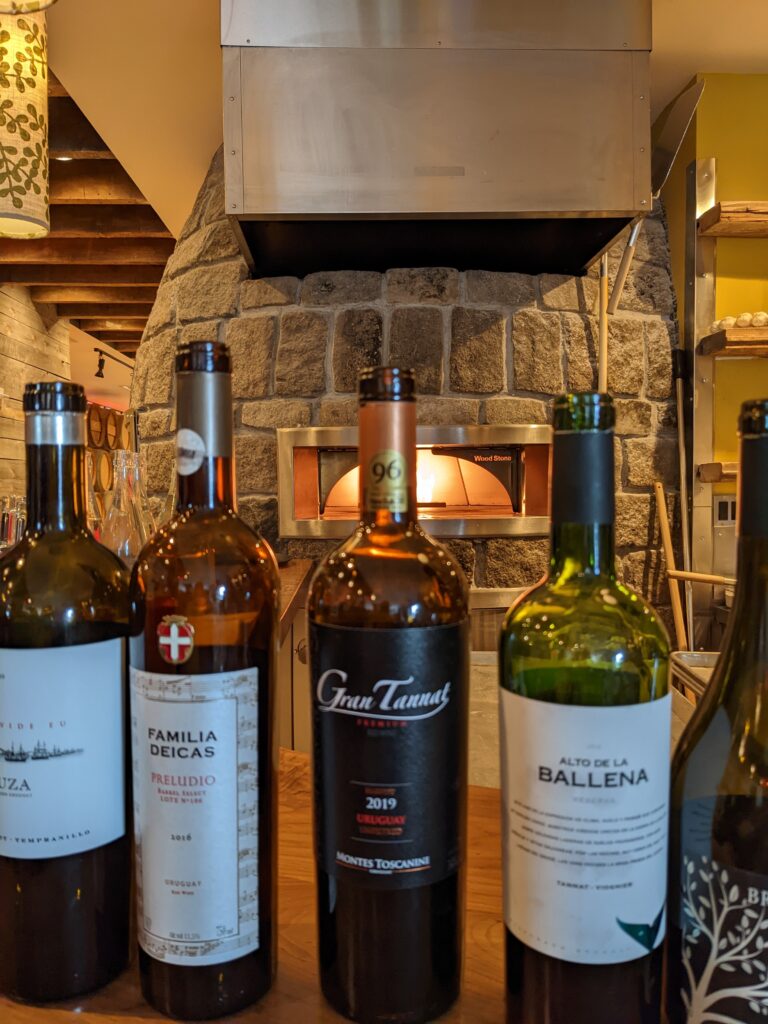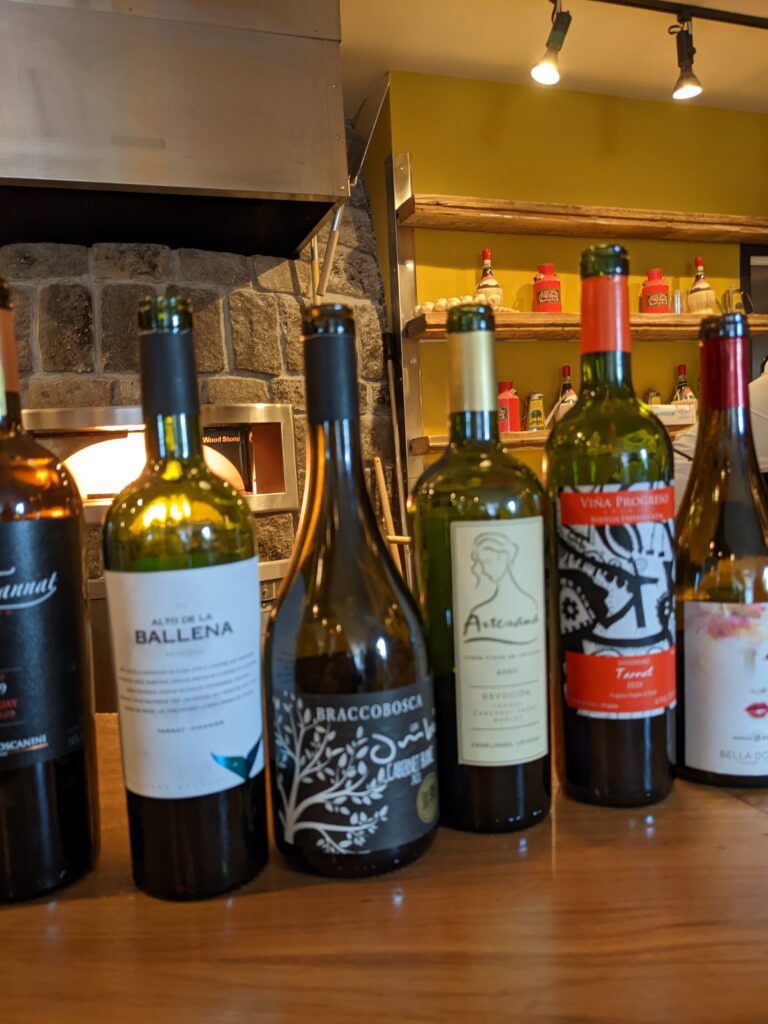Already know your South American ABC’s? Now it’s time to get to know U!

You are likely very familiar with wines from Argentina, Brazil and Chile, but if you are not aware of the wines from Uruguay, you are not alone. Yet, this oversight is worth correcting, especially given the country’s emphasis on further improving quality and care in crafting their wines. Moreover, its winemakers have learned to tame the tannins in its home-spun grape, Tannat, producing a plethora of styles to meet a range of palate preferences.
Although Uruguay is the second smallest country in South America, nestled between Argentina and Brazil, it has a lot of claims to fame. Most notably, Uruguay was the first country to host the World Cup. In addition to sharing a wine heritage with its neighbors, Uruguay also gives them a run for their money rivaling Argentina in tango and steak and Brazil with the longest carnival in the world at 50 days long. Perhaps most impressive, Uruguay boasts a 99% literacy rate and the country has given every school child a laptop since 2009.
Despite a less obvious presence on the world wine stage, Uruguay has been making wine since 1720s, and saw significant growth in the 1800s. However, it wasn’t until the 1990s that the country began to focus on premium wines, with the planting of the more noble, European grape varieties.
Climatically, Uruguay is home to a maritime climate, such as that of Bordeaux and Galicia. Within this climatic condition, the country comprises 1200 vineyards and 160 wineries. Today’s plantings total 12,000 acres and the land is composed of 99 different varieties of soil. The majority of production (75%) centers in two main regions along the coast: Canelones and Montevideo (shaded in yellow in the map below). Here, the vines are planted on gently sloping hillsides and, tend to be older, due to the lengthier history of viticulture in the region.
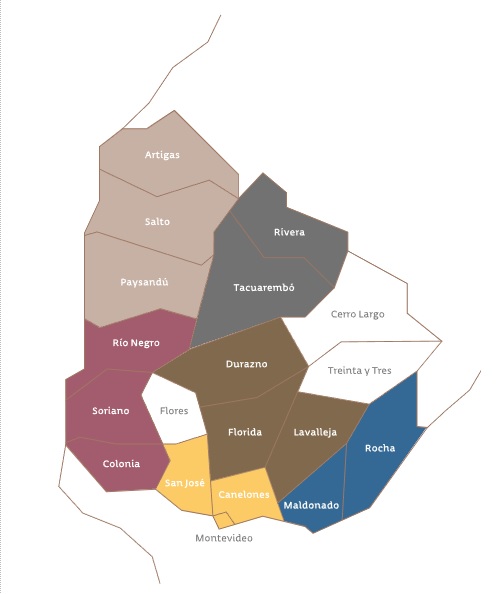
Similarly, the industry is seeking out new areas for planting such as Maldonado (shaded in blue), which is also coastal, but with granite soils. Another frontier area is Rivera (shared in gray), in the north, near the border of Brazil, with a distinctly more continental climate thanks to its location further inland.
For what little reputation Uruguay does have, it is perhaps most well-known and regarded for Tannat. This highly tannic variety of French origin was first planted in Uruguay in the 1860s, with 3,950 acres currently planted. With its thick skin, Tannat is less susceptible to disease, which makes it a good option to combat the country’s humid climate.
Yet, beyond the climate-conducive nature of Tannat, the Uruguayans are quick to note that with the preponderance of cows in the country, they make wine to eat with meat. In fact, one producer proclaimed, “We eat the cows or we will be eaten by them.” NB: Cows outnumber people 4 to 1. For this reason, they like to think that, “Tannat chose us,” rather than the other way around. Thus, Tannat’s high tannin content, which reacts favorably with the protein in steak, provides another reason for Tannat to be such an important grape for the country.
Regardless of the reason for Tannat’s initial take-off, it is clear that Uruguayan winemakers have become very adept at handling Tannat and, in particular, have learned to expertly manage those high tannins. The tannins are still generally intense and structural, yet they are more balanced. Plus, today’s Tannat wines offer a variety of styles from which the consumer can choose.
In fact, in a recent tasting at City Winery, members of the press and trade had a unique opportunity to taste through nine different Tannat wines (including a Tannat-based vermouth), which clearly illustrated the diversity being produced right now. Moreover, tasting through an assortment of varietal wines as well as blends revealed how the current crop of winemakers has implemented their experience and expertise to produce
high-end wines and provided a showcase of what Tannat can truly do.
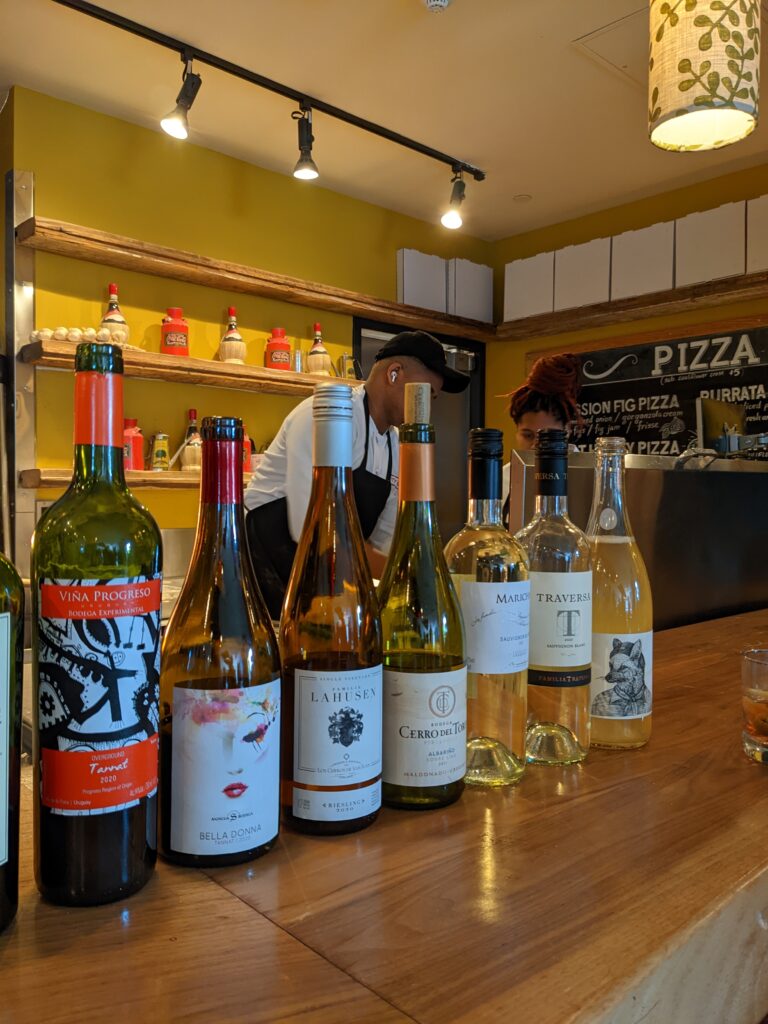
Aside from Tannat, Uruguay is home to other French varieties, including: Merlot, Cabernet Sauvignon, and Cabernet Franc, as well as Marselan, Syrah and Pinot Noir. Although whites comprise a much smaller percentage of total plantings, Sauvignon Blanc is the 8th most planted variety, Chardonnay is ninth and Albarino comes in at number 10.
Today’s producers run the gamut from historic family properties to experimental newcomers and everything in between, all of whom are embracing this latest chapter of Uruguay’s vinous history. There are some very interesting and exciting wines being exported to the U.S. and most of them are well priced. If you don’t know Uruguayan wines, now is the time to get to know them.
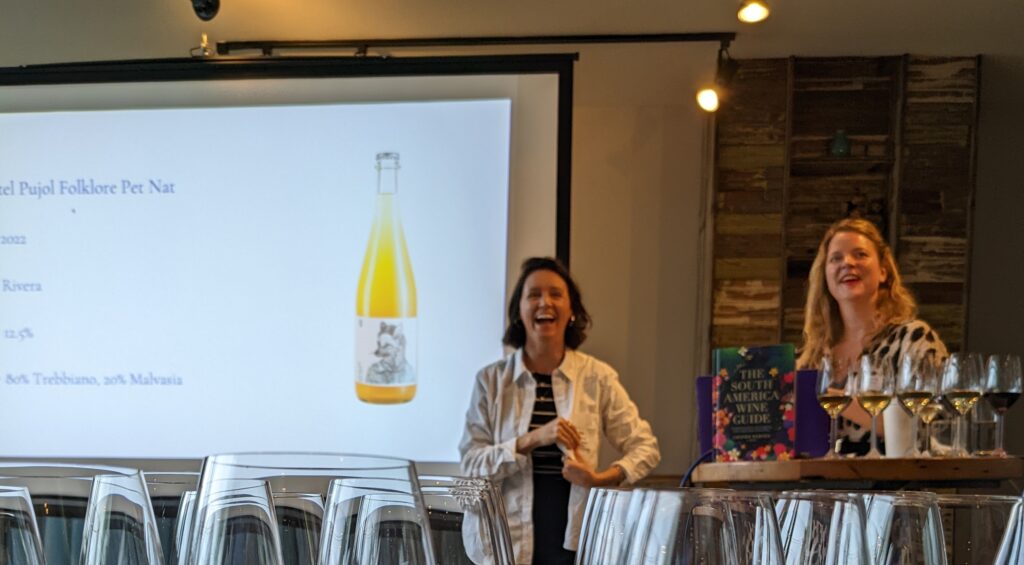
TASTING NOTES
Cerro Chapeu Castel Pujol Folklore Petillant Naturel 2022, Rivera, Uruguay
Planted in the early 1970s, there are only two wineries in this tiny region, bordering Brazil. Produced in the Ancestral Method, this sparkling wine is a blend of 80% Trebbiano and 20% Malvasia. It is lightly sparkling, with nice citrus fruit, minerality, and long length.
Familia Traversa Sauvignon Blanc 2021, Montevideo, Uruguay
The Traversa family hails from the Veneto in Italy, emigrating to Uruguay in 1904. In 1937, they purchased land in Montevideo and established the winery in 1956. This Sauvignon Blanc is treated to some barrel fermentation, giving it more weight and presence on the plate. It is very fresh, with a slight wood note, medium bodied, with mineral and citrus on the palate.
Marichal Sauvignon Blanc 2022, Canelones, Uruguay
Founded in 1916, the Marichal brothers are members of the 4th generation to run the family business. They shifted their focus to fine wine in 2002 and have been improving quality ever wine. Compared to the Traversa Sauvignon Blanc, this wine is more herbal, with more tropical fruit.
Cerro del Toro Albarino Sobre Lias 2021, Maldonado, Uruguay
This wine project is run by a Japanese businessman, who bought the land in the late 1980s. The winery itself was started in 2015 and comprises 70 acres. The wine spends some time sur lie. Aromas of apple and citrus greet the nose and persist on the palate, with high acidity, medium body and long length.
Los Cerros de San Juan Lahusen Riesling 2020, Colonia, Uruguay
Established in 1854 by the Lahusen family from Germany, this is the oldest winery in Uruguay. The vines are planted on rocky soils and the wine was fermented in clay amphora. This Riesling shows lots of freshness with lime and minerality along with long length.

Antigua Bodega Bella Donna Tannat 2020, Canelones, Uruguay
Since 1928, this Canelones-based winery has been family owned and female led, with the 6th generation currently at the helm. This Tannat is produced in a fresh, unoaked style with berries, black fruits, medium body, good acidity and long length.
Vina Progreso overground (revolution) Tannat 2020, Canelones, Uruguay
Well respected winemaker, Gabriel Pisano has been exploring numerous projects since 2009 and established Vina Progreso as his “Experimental Winery” upon his return home to Uruguay. Fresh, with lively acidity, this Tannat is slightly reminiscent of Beaujolais, with light tannins and bright, red fruit aromas and flavors.
Artesana Devocion 2020, Canelones, Uruguay
This boutique winery in Las Brujas was co-founded by Californian and Uruguayan winemakers, which explains why they grow Zinfandel in addition to Cabernet Franc, Tannat and Merlot and use a combination of both French and American oak. This blend of Cabernet Franc, Tannat and Merlot shows juicy red and black fruit. It is weighty, complex, and nicely balanced with ripe, firm tannins, good acidity, full body and long length.
Bracco Bosca Gran Ombu Cabernet Franc 2021, Atlantida, Uruguay
Situated in Atlantida, a coastal area located just 8km from the sea, this winery was started in 2005, A member of the 5th generation of her Italian-heritage family (they are originally from Piedmont), Fabiana came back to the winery six years ago to take the lead. One of their top wines, the Gran Ombu Cabernet Franc spends ten months in New French oak and displays aromas and flavors of dried and fresh herbs, mulberry and cranberry, with good acidity and length.
Alto de la Ballena Tannat Viognier 2018, Maldonado, Uruguay
The husband-and-wife owners of Alto de la Ballena have no family background in the wine industry, but simply wanted to seek out new areas (Maldonado) and pioneer new wines, getting their start in 2001. This wine takes its cue from the Northern Rhone, where the white variety, Viognier, is added to the red grape, Syrah. In this case, Tannat stands in for Syrah. With dark red fruit, dried herbs and vanilla on the nose and palate, the fruit is ripe yet restrained, culminating in long length.
Montes Toscanini Gran Tannat Premium 2019, Canelones, Uruguay
In 1894, the family arrived from Geneva, eventually establishing the winery in 1979 in Canelones. Today, the 4th generation of the family is actively involved in the business. They only produce this specific wine in the best years, and from the best parcels. Offering up intense, firm, yet ripe tannins, this wine is well structured with long length, showing black fruit, oak, vanilla.
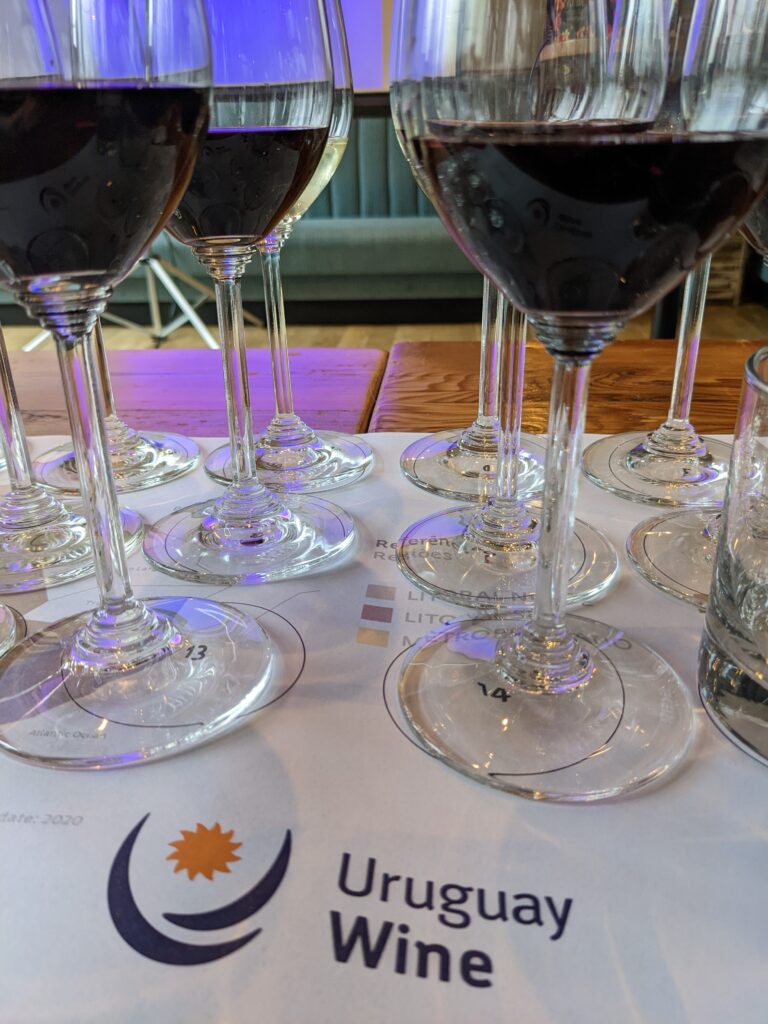
Familia Deicas Preludio Tinto 2016, Canelones, Uruguay
This historic winery was purchased in 1979 and most recently established in 2000. This is a barrel select wine, which is a blend of Tannat, Cabernet Sauvignon, Cabernet Franc, Merlot, Petit Verdot, and Marselan. The selection is made by a large committee of family members after the wine has been aged for 24 months in oak barrels. It is redolent of red and black fruits and oak, with ripe tannins, good acidity, full body and long length.
Bouza Monte vide eu 2020, Montevideo, Uruguay
Founded in 1999, the owners have been pioneers in new regions and with Albarino and are classic car enthusiasts. Bringing together 55% Tannat, 27% Merlot, and 18% Tempranillo, this wine takes its name from a Portuguese phrase, and has a sweet attack, with fresh, ripe fruit, violets, and oak. The full-bodied wine has firm tannins and long length.
Bodega Garzon Balasto 2018, Maldonado, Uruguay
Bodega Garzon was established in 2009 in Maldonado by Argentine oil billionaire Alejandro Bulgheroni, in conjunction with an Italian wine consultant, Alberto Antonini. With a tribute to the terroir of decomposed granite soil and a strong emphasis on sustainability, the owners are more excited about their Silver LEED certification than any wine awards they may have won, which says a lot considering that the winery won Wine Enthusiast’s Wine Star Award for Best New World Winery in 2018. A blend of 45% Tannat, 25% Cabernet Franc, 18% Petit Verdot, and 12% Marselan, this wine is aged in untoasted botti, and offers up black fruit, berries and coffee, with full body and firm tannins. It is quite powerful, yet balanced and complex.
Basta Spirit Vermut Flores Rose NV, Uruguay
An artisanal vermouth collaboration produced from Canelones-sourced grapes, this project started in 2019. With a tradition from Italy and Spain, interest in vermouth has been growing among consumers in Uruguay. There are four different flowers included in the 27-ingredient, botanical recipe. It starts with a base of Tannat rose. It is very fresh and lively.

